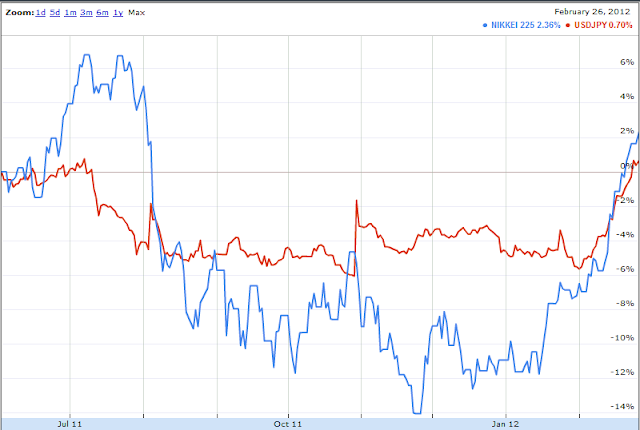Unless your money is in natural gas or Greek bonds, chances are your investments are up in 2012. Equities and commodities in general are performing very well and bond prices for the most part have remained flat. Out of the 93 benchmark equity indexes that we track only 18% are in the red in 2012. The Egyptian EGX 30 Index is up a staggering 46% in a little under two months. Then there's the subject of today's post, the Japansese benchmark Nikkei 225, which is up 15% year to date and 10% month to date. The Nikkei has been the 5th best performing benchmark equity index in February.
We assign two reasons for the solid performance of Japanese equities this year: 1) the improving overall global economic mood, which has had an amplified effect on those markets that were beaten down in 2011 and 2) the weakening of the Yen. The USDJPY cross, after threatening to plunge through its 2011 low of 76, has climbed over 5% in February. Here's the USDJPY side-by-side with the Nikkei going back to June of last year:
As much as fuel prices are a growing concern in the U.S., we suspect that they are creating even more stress in Japan because of the recent move in the Yen.
According to the table at the bottom of this page on wikipedia, fuel prices at the pump in Japan back in April 2011 were $7.23/gallon. Brent, WTI and the USDJPY are all basically in the same place compared to April of last year, so Japanese gasoline prices should be back to close to $7.23/gallon. This is double the
current average gasoline price in the U.S. of $3.59. If fuel prices are going to start having a dampening effect on economic activity, we expect that the first places we'll be seeing that happen is in countries like Japan with relatively high retail fuel prices.




No comments:
Post a Comment